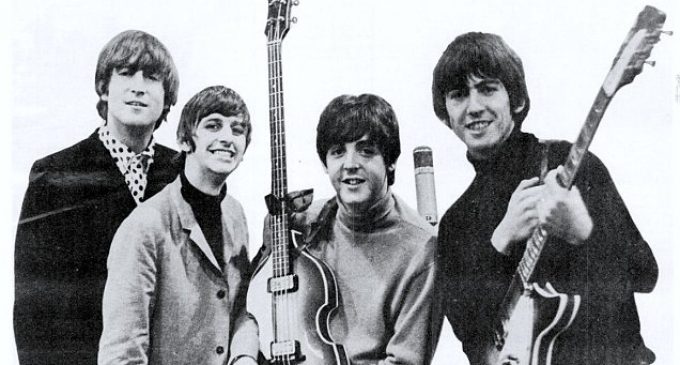The “b7 Minor-Drop” Progression, As Used by Led Zeppelin, the Beatles, Black Sabbath and More

In the previous two lessons (February 2018 and March 2018), I covered the standard “minor-drop” progression, which for decades has been famously used and abused by songwriters in a variety of styles, great examples being Led Zeppelin’s “Stairway to Heaven,” “Shine on You Crazy Diamond” by Pink Floyd, the Beatles’ “Something” and “Michelle,” Jim Croce’s “Time in a Bottle,” “Into the Great Wide Open” by Tom Petty and the jazz standard “My Funny Valentine.”
As you recall, the progression begins on a minor chord, the root note of which then proceeds to descend, or “drop,” chromatically (one fret at a time), either within the chord, or in the bass line, while the other notes—the minor third and the fifth—remain stationary, which creates a poignantly dramatic and bittersweet sound, especially during the signature second chord, which is either a minor major-seven or an augmented triad rooted a half step below the initial minor chord.
I’d now like to present another popular “drop” progression, which also begins on a minor chord and features a descending bass line but does not include that ultra-dramatic minor major-seven or augmented chord, resulting in a subtler and less brazenly cliché harmonic backdrop.
Advertisement
Led Zeppelin’s “Babe I’m Gonna Leave You” (performed above by Robert Plant), the Beatles’ “While My Guitar Gently Weeps” and “25 or 6 to 4” by Chicago are three classic rock songs built around a progression that starts on an Am chord (either played or implied) and then has the bass line dropping a whole step (the equivalent of two frets) to G, which is the minor, or “flatted,” seventh (b7), then continuing chromatically, to the major sixth, F#, then the minor sixth, F, before beginning again on Am or briefly moving to the “five” chord, E, then looping back to Am. Similar to “Babe” in structure and accompaniment style (rolling acoustic arpeggios) is the verse section of the beautiful Styx ballad “Suite: Madam Blue,” which essentially follows the same progression, only a whole step higher, in the key of B minor.
new-and-fixed-1600
FIGURE 1 illustrates a few different incarnations of this progression, which many refer to as the “b7 minor drop.” Note that it’s equally common for the second chord to either retain the initial chord’s root note, in this case, A, in its voicing, which makes the chord Am/G (“A minor over G”), as George Harrison did in “While My Guitar,” or to have the root note drop in the chord as well—A to G in this case. This results in a simpler-sounding C/G (“C over G”) chord, which is what Jimmy Page plays in “Babe,” while adding various melodic embellishments to the top of each chord in the song’s repeating progression.
Another option is to not play any chords but rather imply a progression with a melody and bass line, which may be doubled an octave higher with single notes or strummed octaves, as Chicago guitarist Terry Kath did in “25 or 6 to 4,” as did Page in his electric guitar part during the heavy chorus sections of “Babe.”
The outro to Black Sabbath’s “Iron Man” features a similarly structured chord-less riff, in this case in the key of E minor, with guitarist Tony Iommi and bassist Geezer Butler outlining a b7 minor-drop progression (Em Em/D Em/C# Em/C) with two independent single-note lines, what classical music theoreticians call counterpoint.
Other well-known and tasteful examples of the b7 minor-drop progression’s use in popular music, in various keys, are the second part of the verse to “Into the Great Wide Open” (in A minor) and, with keyboard-driven songs, the intro and verse to “Dream On” by Aerosmith (in F minor), the bridge sections to Billy Joel’s “Piano Man” (in A minor) and “She’s Always a Woman to Me” (first in C minor, then Eb minor), the verse to “All in Love Is Fair” by Stevie Wonder (D minor) and the chorus to Elton John’s “Your Song” (C minor).
FIGURE 2 presents a few additional sets of b7 minor-drop chord progressions and voicing variations in various keys, based on some of the above mentioned songs and arranged for stand-alone guitar. Try transposing these sets of chord changes to other keys.




There are no comments at the moment, do you want to add one?
Write a comment